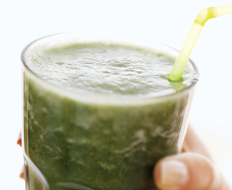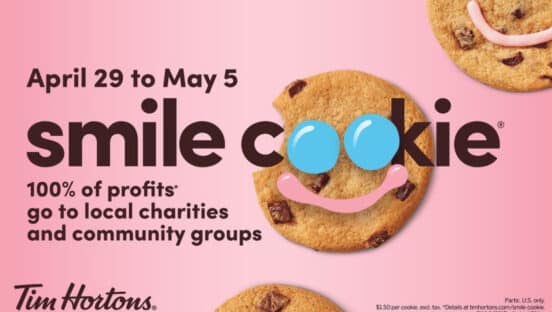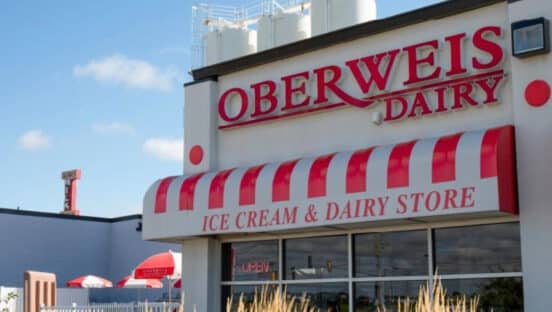Juice isn’t just for kids, and it’s not just a breakfast option. As busy Americans seek quick, better-for-you options at all day- parts, juice has become a more critical part of their regular diet.
Juice’s healthy halo might encourage restaurants to move beyond serving just old favorites like orange and apple juice. There is a wide range of fruit and vegetable juice options, as well as flavored waters and low-calorie juice drinks, that can expand a quick serve’s beverage menu.
Not surprisingly, orange is by far the most popular juice variety offered at restaurants, particularly during breakfast. Statistics from Datassential, a food industry market research firm, show orange juice on the menu at nearly two-thirds of limited-service eateries. This is followed by apple (42 percent) and cranberry (14 percent).
But various bottled juice blends can deliver exotic fruits, including kiwi and pomegranate, to limited-service menus.
“There is clearly a trend toward more innovative and less common juice flavors,” says Maeve Webster, Datassential’s director of research. Growth in vegetable juices, which are regularly served at juice bars, is “certainly indicative of consumers’ increased interest in better-for-you options and their increased willingness to experiment” with new items, she adds.
Juice has become integral to many consumers’ diets, says Sarah Ladden, a registered dietitian who works with the Juice Products Association, a Washington, D.C.–based trade group.
Recent medical research indicates that “people consuming 100 percent fruit juice have improved dietary quality,” she says. “They have higher intakes of key nutrients, such as vitamins A and C, calcium, and potassium.” This is particularly important for children, because juice also has less dietary fat, saturated fat, sodium, and added sugar than many other beverages.
Despite the health benefits, juice sales have fallen in recent years. A “Fruit/Vegetable Juice in the U.S.” report by Euromonitor International, a London-based consumer research company, reveals that U.S. juice sales have declined every year since 2007, including a 2 percent drop in 2011. Volume was expected to decline again in 2012.
Fruit and fruit-related juice sales by volume peaked in 2003 at 4.22 billion gallons, according to Beverage Marketing Corp., a market research and consulting firm for the beverage industry. Those drinks declined 4 percent during the first half of 2012, including a 3 percent drop in the foodservice segment.
“On the surface, it would appear to be a great category, because consumers are moving to healthier choices,” says Gary Hemphill, senior vice president of information services at Beverage Marketing. However, he says, there are several big drawbacks, including the fact that juice is relatively expensive compared with other refreshment options.
Meanwhile, Euromonitor’s report states that the focus on U.S. health and wellness might actually be a bad thing for juice. Whole juice has high sugar content from natural fructose, and that’s a negative for consumers counting calories and parents worried about childhood obesity.
One juice segment that is doing better, according to Euromonitor, is “nectars,” which contain 25–99 percent juice. This group’s sales surged 3 percent in 2011, powered in part by development of the stevia plant, which provides a natural, low-calorie sweetener.
Coconut water is also growing in popularity as part of the health-and-wellness movement. This natural juice from young coconuts is a source of calcium, magnesium, electrolytes, and potassium, and it’s low in calories and has no fat.
Coconut water and tropical fruit juices from Jamaica’s Grace Products are among an array of beverages offered at Golden Krust Caribbean Bakery and Grill, a New York City–based chain of more than 100 restaurants featuring Jamaican and other Caribbean dishes.
“Most of our flavors are from the islands,” says Candice Richards, director of marketing for the chain. “Some of our franchisees will make carrot juice or sorrel (a Christmas drink made with the sorrel herb) right in the stores.”
While overall fruit-juice sales have struggled, vegetable juice and vegetable-fruit blends are growing, according to Beverage Marketing. The segment, which accounts for only 5 percent of the juice category, declined during the recession but has recovered and is ahead of 2006 levels.
Fruit and vegetable juices are featured at the growing number of juice bars around the country. Juice bars have been around for decades, getting their start among health-conscious denizens of Southern California, says Dan Titus, president of Juice Gallery Multimedia, a consulting firm that also oversees the Juice and Smoothie Association.
Even though “juicing” became mainstream in the 1990s with the development of juice-bar chains, it was still a “relatively small universe until Dunkin’ Donuts put smoothies on the menu” in 2006, Titus says. “Now smoothies are everywhere.”
In fact, smoothies served at quick-service restaurants—including at McDonald’s, Burger King, Dairy Queen, and other major chains—now make up nearly 39 percent of the $3.5 billion juice and smoothie bar market, a Juice and Smoothie Association report states.
Smoothies are “the entry into the health-food segment,” says Aaron Aslin, marketing manager for Juice It Up!, a juice bar chain based in Irvine, California. “It’s a broader market, and people are more used to that type of drink.”
Titus says juice bars have taken advantage of the increased availability of fresh, organic fruits and vegetables, as well as flash-freezing techniques that preserve nutrients in the frozen fruit used to make smoothies. “This has been fantastic for the industry,” he says.
New York City’s Juice Generation has expanded to 10 locations since starting in 1999 in the Hell’s Kitchen neighborhood. Each location has a large display of fresh fruits and vegetables to be juiced, and customers can choose a specific menu item or customize their own drink.
“We are seeing a huge influx of people who never set foot in a juice bar before,” owner Eric Helms says. “They may be a little tentative, wondering, What does this or that drink taste like? Or, What’s its feel? So we try to create a very welcoming atmosphere.”
Green juice drinks, consisting largely of green veggies, are becoming more common. One of Juice Generation’s most popular items is Supa Dupa Greens, made with spinach, kale, parsley, romaine, cucumber, and celery, with lemon and apple juices for sweetening.
[pagebreak]
The chain’s 16-ounce drinks contain up to three pounds of organic fruits and vegetables. “New York is fast paced, and to get all of your veggies in a 16-ounce serving is great,” Helms says. Juice Generation also has smoothies, a Juice Farmacy line of hot juice drinks, and bottled Cooler Cleanse, the company’s juice-fasting regimen shipped nationwide.
Daily Juice, with three locations in Austin, Texas, features a wide range of organic juices that are cold pressed, a process that mashes the fruit to extract juice while retaining natural nutrients. The company recently added salads and wraps to the menu and opened a new prototype unit as it prepares to expand outside its home city, says CEO John Martin. But high-quality juices and smoothies remain the main attraction.
“There is awareness in the consumer space that other competitors are [using] mixes and dairy to bulk up their drinks,” he says. “We are all organic and natural.”
Daily Juice’s most popular item is the Subliminator smoothie, with blueberries, cherries, bananas, apples, peanut butter, raw brown rice protein, and flax seed oil.
Jamba Juice has long been a quick-service company synonymous with juicing. The company began in 1990 by blending juice, and its “core is still fresh juice—orange, carrot, and wheat grass—squeezed in the shop,” says James D. White, Jamba Juice’s chairman, president, and CEO.
Renewed consumer interest in juicing’s benefits has led the chain to focus during the past year on expanding its fresh juice and juice-blend offerings. Jamba Juice is testing stores in the San Francisco area with blends including beets, kale, apples, ginger, and pineapple juices. It also has a new store design that puts juice at the forefront, a test that will expand to more stores this year.
“Whether it’s with juice, smoothies, or our other menu items, we think we play a central part as customers look for healthier solutions,” White says.
Juice It Up!, with most of its 84 units in California, also has been transitioning to more raw-juice blends to go with freshly made orange, apple, carrot, and wheat grass juices.
“We’re now looking at green and orange and red juices,” Aslin says. That includes cucumber, celery, spinach, kale, and beets. One of the most popular juices at the chain is the Rejuvenator, with apples, carrots, beets, cucumbers, and ginger.
Starbucks recently decided to go for juice in a big way. The Seattle-based giant acquired Evolution Fresh, which makes bottled, cold-pressed juices and smoothies using a high-pressure pasteurization process. That helps retain the natural flavors and nutrients of the raw fruits and vegetables for 40 days.
Starbucks sells Evolution Fresh at 2,200 of the parent company’s West Coast units, as well as at grocers and other retail outlets. Howard Schultz, Starbucks’ chairman and CEO, told investors last fall that the company is “on track to continue extending distribution of Evolution Fresh” into more markets this year.
Six varieties of Evolution Fresh juices—three green, two fruit, and one hydration—are sold in those West Coast units, but many more are available at newly created Evolution Fresh stores. The stores feature a “juice wall” with eight taps containing different juices, allowing employees to make a variety of handcrafted juice drinks and smoothies. These units also have breakfast items, soups, salads, sandwiches, and wraps. Bottled juices are also available.












